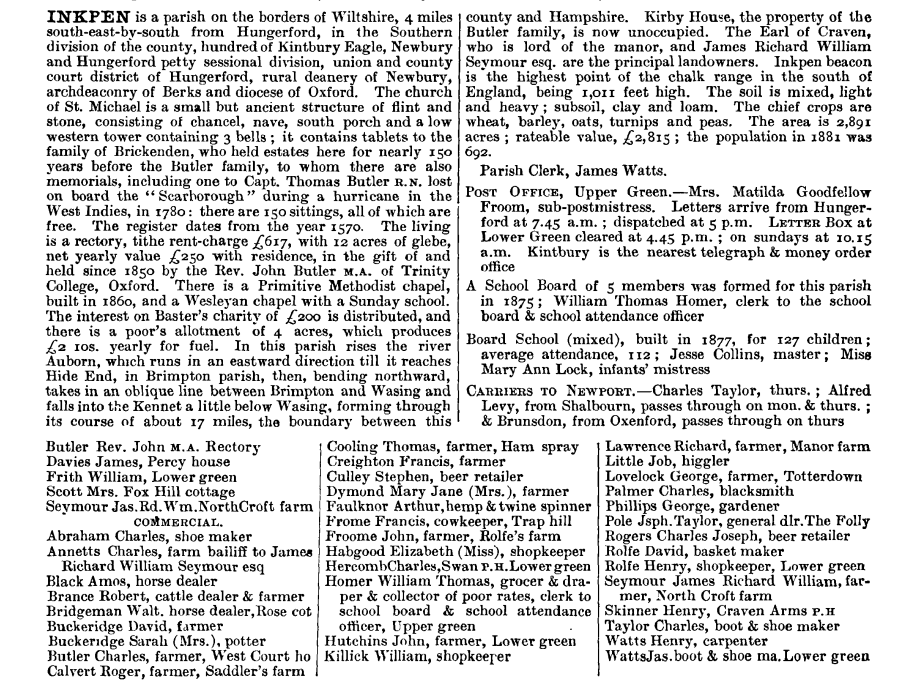Work in Inkpen over the ages
|
Inkpen Businessess |
|
|
1869 J. Little, Inkpen Higgler |
|
|
1887 Arther Faulknor, Hemp
& Twine, |
|
|
1903 Henry Preston, Pond
Maker |
|
|
1907 Residents and Occupations in Inkpen |
|
|
|
|
|
Inkpen Resident Occupations/Trades |
|
|
Inkpen Trades 1618 to 1856 |
Kelly's Berkshire Directory 1848

Kelly's Directory of Berkshire 1887

Links:
A History of the County of Berkshire: Volume 4 Parishes: Inkpen
The area has always been predominantly agricultural, much of it owned by the Craven estate. The common fields were enclosed by agreement in 1733, and a considerable amount of open heath was enclosed by Parliamentary Act in 1810-15. There are still 30 acres of heathland in the village, originally a Poor’s Allotment, which are now protected as a nature reserve.
Until the first half of the twentieth century, the main activity was agriculture, with its attendant crafts, including rope making, silk and wool weaving, basket-making and pottery-making. In the middle of the nineteenth century a sawmill, later known as James Edwards and Sons, started activities on Post Office Road. In its heyday as many as 60 men worked there. In 1968, however, the sawmill closed, and, later, an industrial area was established.
Inkpen Pottery. A recent study by Oxford Archaeology can be found here. In the Pottery Lane and Craven Road areas there were at one time no less than eight potteries, using the local yellow clay. The last one, which the Buckeridge family had owned for at least 150 years, ceased production in about 1930. The clayworkers were known locally as “yellowlegs”
The Inkpen Ropewalk, off Weavers Lane - A ropewalk is a long straight narrow lane where long strands of material are laid before being twisted into rope. In Inkpen Lime trees were grown for their strong and flexible inner bark which was used to make the ropes. Rope was essential in sailing ships and the standard length for a British Naval Rope was 1,000 feet (300 m). A sailing ship such as HMS Victory required 31 miles (50 km) of rope. How to make Lime Tree Bark rope is shown here.
 IHS
IHS